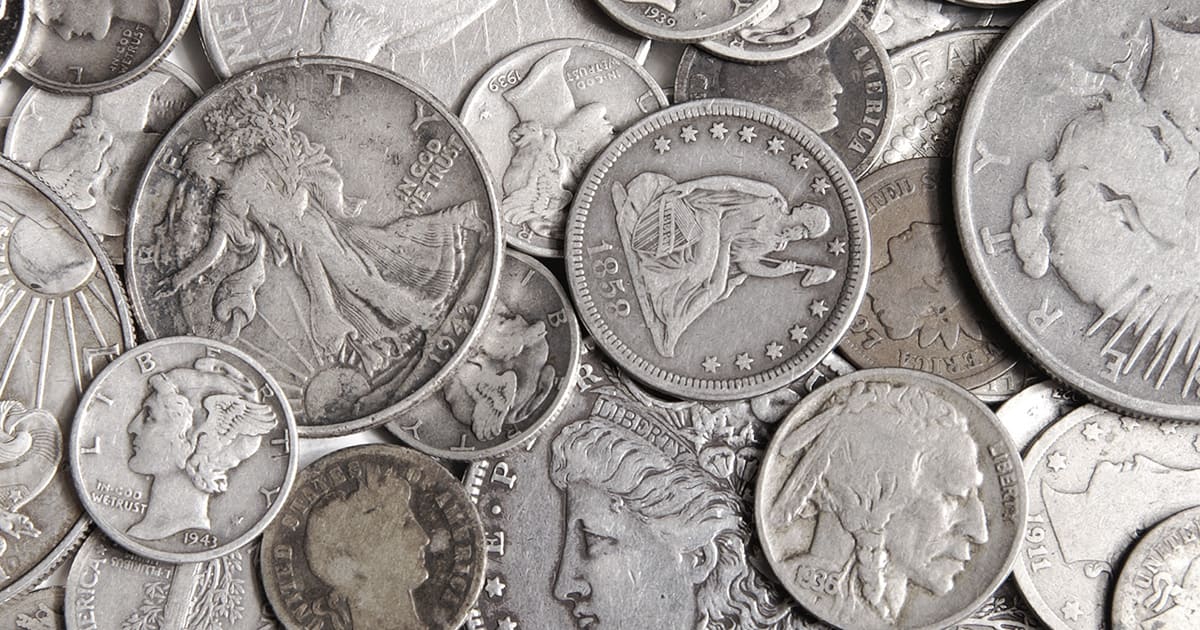
How to Test if Your Coins are Silver
Some people may be curious about the silver content of a coin they were gifted, a collection they inherited, or silver bullion they bought from a new dealer. Whichever way your products are acquired, it is worth knowing how to tell if your silver is real or fake.
If you buy coins and bullion from less reputable or less established dealers and retailers, you may run the risk of purchasing counterfeit products. There are numerous ways to test a silver product to determine its legitimacy, but not all tests are reliable. Some tests can even damage your product—so it is essential to look into your different testing options before diving in.
Ice Cube Test
When researching how to tell if your silver is real or fake, you might come across the ice cube test. This test is popularly recommended online but is unreliable in practice. The ice cube test requires placing an ice cube on a silver product and examining how fast it melts. Since silver is a highly conductive element, the ice cube should melt quickly on a pure silver product. However, many factors could interfere with this test or accelerate the results.
The silver product could be warm from being held in one’s hands or positioned under a lamp, for instance. Unless you time how quickly an ice cube melts on something silver and compare that to an ice cube of the same size allowing it to melt on something other than silver, you cannot rely on this test. You could test how fast something melts on a .999 fine silver bar or coin and compare that against an item of .925, .900, .800, .500. .100 coin or bar, but you still cannot ascertain a silver item’s purity using this test. Given the number of variables to control in a test like this, we believe this test is unreliable for most silver bugs out there.
Ring Test
The ring test is another method to find out if your silver is real or fake. This test is a bit more reliable but won’t reveal the item’s purity. Tap the rim of a suspected silver coin lightly with a pencil. If it rings, it is silver. You won’t be able to tell the coin’s exact purity, but you can safely rule out a plated fake. This test could potentially damage your silver bars or coins, so it isn’t the best method to test your silver when trying to keep it in pristine condition.
Magnet Test
The magnet test can tell you whether your silver coins contain magnetic material instead of silver. If the product doesn’t stick to a magnet, you still don’t know if it is genuine, but if it does stick to a magnet, it is fake. The magnet test is not comprehensive but can help you identify counterfeits.
Weigh and Measure Test
This test is much more accurate and does not hurt the coin or bar. The weigh and measure test requires a bullion scale and calipers. Measure the edge of a coin to determine its thickness and the size of the coin’s diameter in millimeters. Look up the dimensions online and compare that to the coin in your hand. If the dimensions are the same, then it is likely genuine. This test should work for various well-established products like American Silver Eagles and Roosevelt Dimes. But if you have generic rounds, the dimensions may vary, making it more difficult to verify the round’s legitimacy with this test.
XRF Scanners
X-Ray Fluorescent (XRF) scanning technology is an excellent and efficient way to determine the purity of a precious metal’s product. This technology scans an item and identifies its different layers and exact composition, making it easy to spot metals that should not be there. XRF provides results quickly and without damaging the item. Unfortunately, this technology is very expensive and generally costs tens of thousands of dollars. This is not an affordable option for the average collector, but local bullion dealers may have this technology and may test your products for you.
Avoiding Fake Silver
When buying silver coins and bullion it is good to keep in mind retailers and dealers that test their products before selling them. Businesses in the precious metals industry are more likely to have XRF technology to verify their products’ legitimacy, especially when bought from the secondary market. Uncertainty can be avoided by purchasing popular products from trusted retailers.




